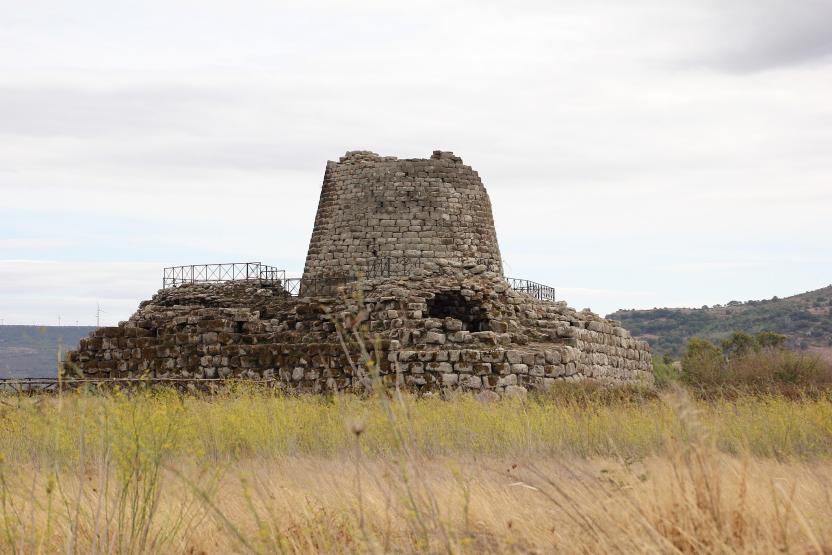Overview of the itinerary
Sentiero Italia runs the length of the island’s eastern side, covering its most important mountains, in 28 stages. Starting from the north: it flanks the Monte Limbara massif, crosses the limestones of Mont’Albo and Tuttavista, skirting the Gulf of Orosei, it crosses the Supramonte, Gennargentu and the Tacchi of Ogliastra and reaches Perdasdefogu. Further south, it passes through Armungia and the Gerrei sub-region. Lastly, it touches on the villages of Burcei and San Gregorio, continuing on the Sette Fratelli massif to the old prisons of Castiadas.
General information on Sentiero Italia (Grand Italian Trail)
Sentiero Italia, or Grand Italian Trail, as also explained on the official website, is a walking route that crosses the whole of Italy, using mainly but not exclusively “registered trails”.
In particular, in Sardinia, not all the stages of the Sentiero Italia of CAI (Italian Alpine Club) are made of trails already included in the registry of the Sardinia Trail Network (RES), either because they have not yet been tested and approved or simply because they cannot be registered as they do not meet the requirements. However, as a whole, the Sentiero Italia is the single longest walking route currently crossing Sardinia from the north (S. Teresa Gallura, stage Z 1) to the south (Castiadas, end of stage Z 28), touching on the most fascinating mountain areas in central-eastern Sardinia: the plateau of Buddusò, Tepilora, the Cedrino river valley, the ancient forests of Montes, Perda Liana and the regional forest of Montarbu, Monte Genis, and lastly the regional forest of Settefratelli (among the many crossed by the various stages of this long hiking itinerary).
Information on this stage of the trail
After a stop at the interesting Museo del Sughero (Cork Museum), leave the town of Calangianus to visit the tomb of the giants (megalithic communal tomb) of ‘Pascaredda’. This is a beautiful, well-maintained site that is easily reached as it is well-signposted.
Retrace your steps for about 500 m and return to the path to see the church of ‘Le Grazie’. The church, built in granite stone, can be visited through the side door, which is open. Inside, it has a beautiful altar.
After this stop, continue on your way towards Monte Limbara. Before taking the dirt road leading to the top of the mountain at 1025 m asl, you will cross the cycle path built on the former Calangianus-Monti railway line. The crossing point with the cycling path is fully signposted. Worthy of note at li Conchi is the presence of valuable tafoni (rock cavities), which have been used as natural shelters since ancient times.
If you wish to avoid the climb up Monte Limbara, you can follow the cycle path that leads in the direction of the Monti railway station. On Monte Limbara, at the Li Conchi locality, there are two wooden huts, the first privately owned (hunting company), the second owned by the municipality of Calangianus and managed by the Fo.Re.S.T.A.S. Regional Agency. This hut can be used, upon request, as an intermediate stop point, since the trail stage from Calangianus to Monti is 37.80 km long.
There are also two fountains, one along the route at the Li Conchi locality and the other, the Crispoli fountain, which can be reached by a diversion of just over 1 km. The area is very beautiful and is dotted with caves.
After a short stretch, still on a dirt road, you must turn left in a south-southeasterly direction, in the direction of Monti, passing alongside Punta Cupuneddi. From this fork towards Vallicciola (a charming locality with some sequoia trees), if you intend to stay for one or two days, you can walk the paths of Monte Limbara for more than 60 km.
After reaching the locality of Piandiscopa (indicated by an old signpost), continue along a livestock trail and then, after walking on a recently created path, follow a downhill livestock trail for more than 700 m ending near the ‘lu rustu’ stazzo (farmhouse). After crossing the stazzo or, alternatively, after following the cycling path, pass the provincial road (SP) that turns right to Berchidda and left to Calangianus, continue on a dirt road that after a few kms, just before the former Sa Corona agritourism farm, becomes a tarmac road. After crossing, via underpasses, the railway tracks and the state road (SS), you will reach Monti.
Notes
Fairly long stage, about 38 km. An intermediate overnight camp is planned on Monte Limbara in the Li Conchi locality, where however, the accommodation facility is not currently available.


